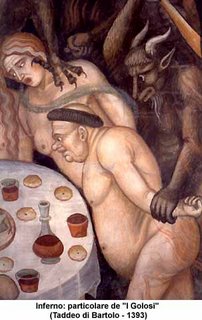
I've just come across something that I would definitely have included in the Jane's Smart Art Audio Guide to St. Peter's Basilica had I known it.
According to R.A. Scotti, in her recent book about the building of St. Peter's, Basilica, the trench excavated for the foundation of Bramante's enormous piers was 25 feet deep. Think about it ... dug by hand, the mucky soil drawn up from the depths, bucket load by bucket load ... a 25 foot deep trench running the circumference of each massive pier is a huge amount of earth-moving!
Scotti's description of the ceremony which was held at first light on April 18th, 1506, is delightful. She tells of a fierce wind whipping at the cardinals' crimson cassocks, and the bull-like figure of Pope Juilius II visible above the sea of humanity, tossing commemorative coins into the crowd as he was borne to the site, seated in a sedia gestatoria.
"Two masons descended first, followed by two cardinals, and then the pope, grim-faced. He climbed down the ladder carefully, his ringed fingers grasping the rungs, encumbered by the heavy clothing, the weighty tiara, descending lower, lower yet. The Ager Vaticanus was marshy, the earth in the pit damp, the air close."
"As Julius disappeared into the trough, the crowd pressed forward for a better view. Dirt flew, striking his tiara. For a terrifying moment he thought the sides would cave in and bury him. ... The trench was 'like a chasm in the earth,' the papal master of ceremonies, Paris de Grassis, recorded in his journal, 'and as there was much anxiety felt lest the ground should give way, Pope Julius thundered out to those above not to come to nearer the edge.'"
I love the visual image of this burly white-haired pontiff, larger-than-life and glorious in voluminous brocade, jewels a-glitter, descending gingerly into the muddy pit to lay the first stone in the foundation of what was to become, over the course of two centuries, one of the most remarkable achievements of the Renaissance.
